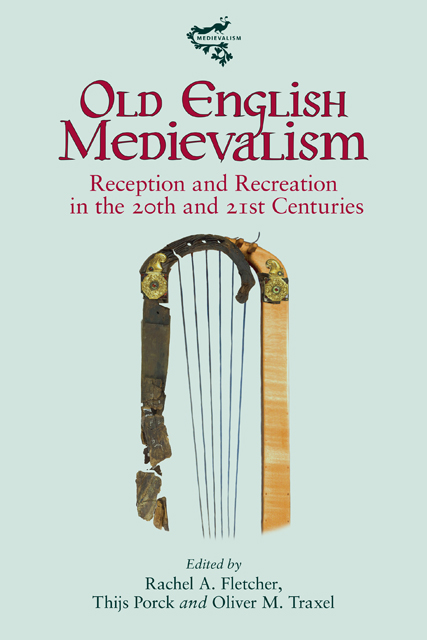Book contents
- Frontmatter
- Contents
- List of Illustrations
- List of Contributors
- Acknowledgements
- List of Abbreviations
- Early Medieval English in the Modern Age: An Introduction to Old English Medievalism
- I Reinventing, Reimagining and Recontextualizing Old English Poetry
- II Invoking Early Medieval England and Its Language in Historical Fiction
- III Translating and Composing in Neo-Old English
- IV Approaching Old English and Neo-Old English in the Classroom
- Bibliography
- Index
- Medievalism
2 - ‘Abroad in One’s Own Tradition’: Old English Poetry and Kenneth Grahame’s The Wind in the Willows (1908)
Published online by Cambridge University Press: 17 December 2022
- Frontmatter
- Contents
- List of Illustrations
- List of Contributors
- Acknowledgements
- List of Abbreviations
- Early Medieval English in the Modern Age: An Introduction to Old English Medievalism
- I Reinventing, Reimagining and Recontextualizing Old English Poetry
- II Invoking Early Medieval England and Its Language in Historical Fiction
- III Translating and Composing in Neo-Old English
- IV Approaching Old English and Neo-Old English in the Classroom
- Bibliography
- Index
- Medievalism
Summary
In a 2019 interview, the American poet Richard Kenney quotes Ezra Pound: ‘poetry begins to atrophy when it gets too far from music’. The subject of the interview is Kenney’s belief in the essential importance of song to poetry; or, as he puts it in a fugue-like development of his main theme, how ‘sonic echoes strum the neural lyre’. Kenney’s intrinsic belief in the paramountcy of sound in poetry has resulted in his use of a set of poetic methods including early Irish metrical forms and the Welsh technique of cynghanedd. His engagement with Old English verse has resulted in a method whereby he locates the alliteration between the end of one line and the start of the next, ‘riveting’ (as he refers to the technique) the sounds together not within the line but across the line.
Kenney alludes frequently throughout the interview not just to Pound but also to W. B. Yeats, Dylan Thomas, Seamus Heaney and Gerard Manley Hopkins; all poets who may be said to have worked with ‘sonic manipulation’ (to borrow Kenney’s phrase). Kenney is right when he stresses the fundamental significance of the sonic (and by extension the aural) to poetry but less convincing when he tries to draw explicit connections and lines of descent between older forms such as Anglo-Saxon accentual verse and the work of the poets he cites. For Kenney, Hopkins’ sprung rhythm is simply alliterative poetry re-clothed in modern English.
The aim of this chapter is to examine part of Kenneth Grahame’s The Wind in the Willows as an example of how in the triggering of aural allusion our own perceptions and preconceptions allow us to hear accentual verse in the language and subject matter of works which are not explicit re-workings or even re-imaginings of older texts. It will propose a model of reading that spreads beyond the acoustic to enmesh the linguistic, literary and cultural knowledge of writers and readers and the readings they bring to bear on any engagement with a text. Using aspects of rhizome theory, it will suggest approaching the re-materialising of Old English via a network of allusion rather than via the linear trajectory of direct influence.
- Type
- Chapter
- Information
- Old English MedievalismReception and Recreation in the 20th and 21st Centuries, pp. 37 - 52Publisher: Boydell & BrewerPrint publication year: 2022



